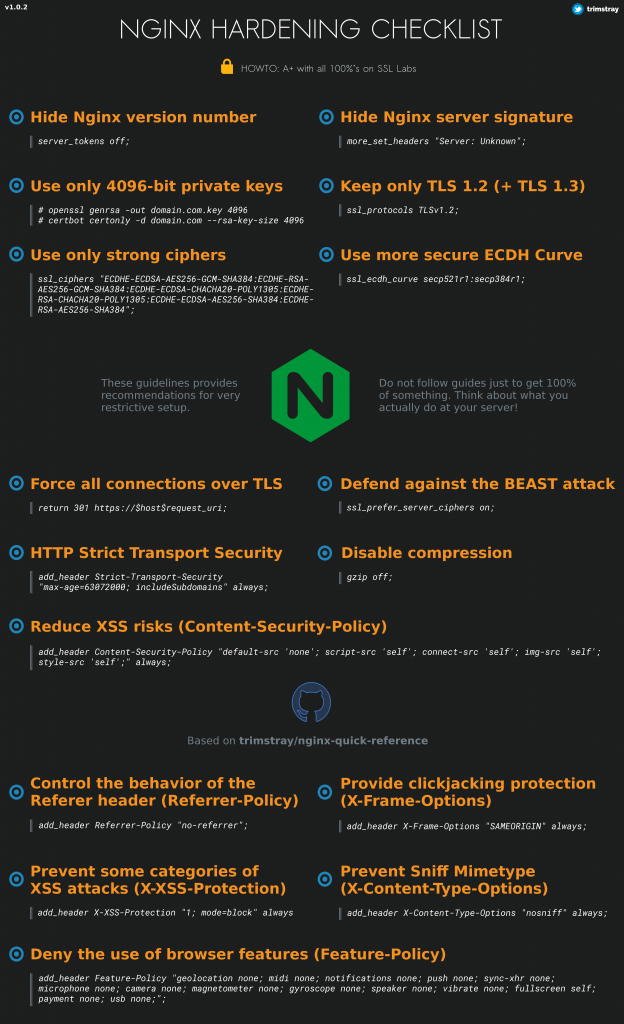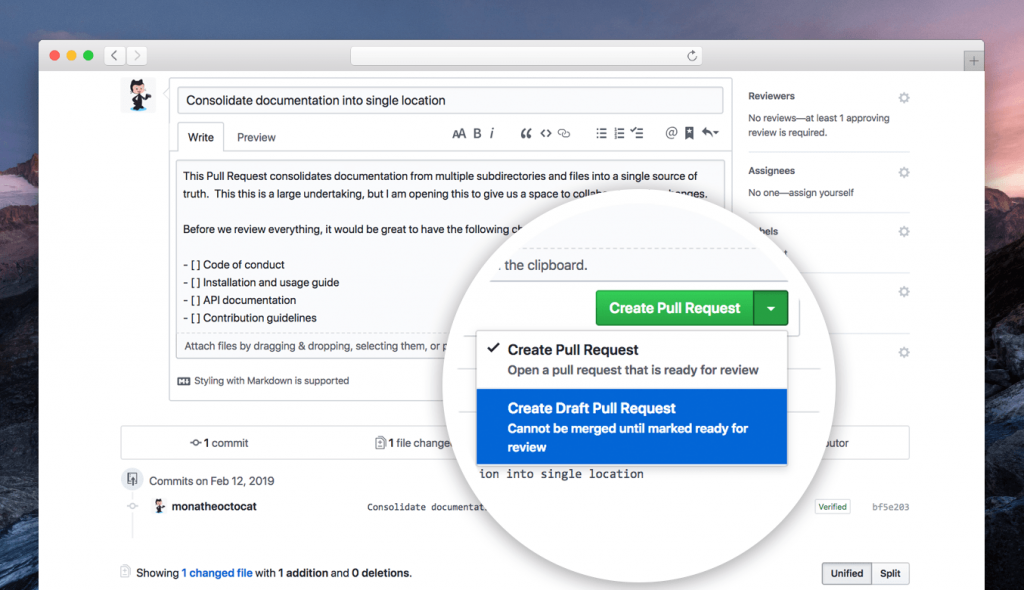
Nginx Quick Reference is an excellent summary of notes on tweaking the performance and security of the Nginx web server configuration.

Nginx Quick Reference is an excellent summary of notes on tweaking the performance and security of the Nginx web server configuration.

Here are some exciting news from GitHub – an introduction of the Draft Pull Requests. I think this is a very welcome addition to GitHub features.
At work, we’ve been using a work around to solve the problem – a [WIP] prefix in the title of the pull request, which means that this is “Work In Progress” and the PR shouldn’t be merged.
While the prefix does help, it’s not as good as the new Draft Pull Requests. Somebody can still merge a [WIP] pull request by mistake. But with Draft Pull Requests, merging is blocked, until the developer indicates otherwise.
Great stuff!
phpdaily/php is a collection of the daily updated Docker images for a variety of PHP versions. Interestingly, these include even the most recent development versions, like PHP 8.0.
Jouke Waleson points out to an interesting fact about UUIDs in MySQL, which you might have missed in the documentation:
Warning: Although UUID() values are intended to be unique, they are not necessarily unguessable or unpredictable. If unpredictability is required, UUID values should be generated some other way.
Make a note!
“Dotfile madness” is an excellent look at the problem of hidden data and configuration files that seem to be multiplying lately in the users’ home directories:
We are no longer in control of our home directories.
My own home directory contains 25 ordinary files and 144 hidden files. The dotfiles contain data that doesn’t belong to me: it belongs to the programmers whose programs decided to hijack the primary location designed as a storage for my personal files. I can’t place those dotfiles anywhere else and they will appear again if I try to delete them. All I can do is sit here knowing that in the darkness, behind the scenes, they are there. Waiting in silence. Some of those programmers decided to additionally place some normal files and directories in the same place. Those are clearly visible every time I executelsin my home directory.
While there is no easy centralized solution to this problem, as each application’s developer decides for himself, the article proposes a better way of doing things, reminding us about the XDG Base Directory Specification. This spec allows for a much finer control of where things go via the XDG_* environment variables.
Nice one!